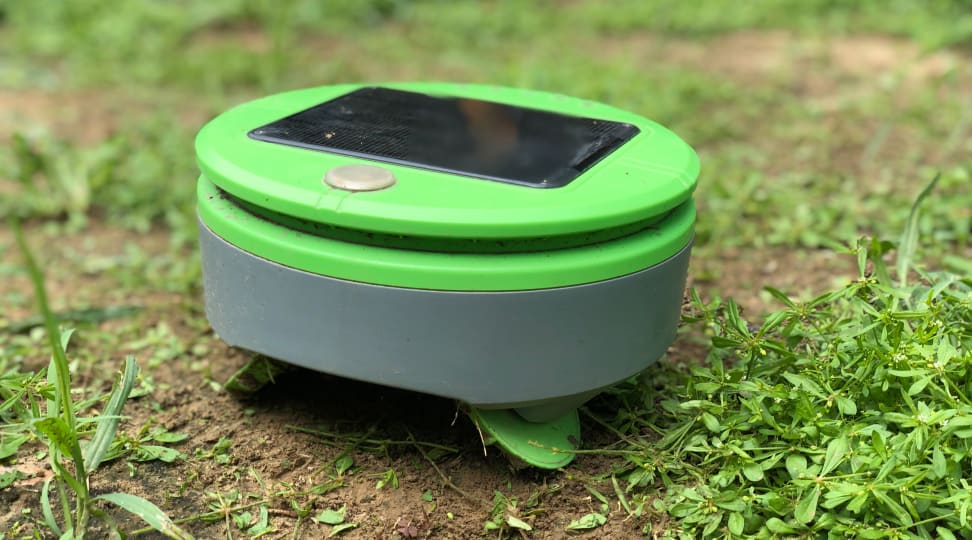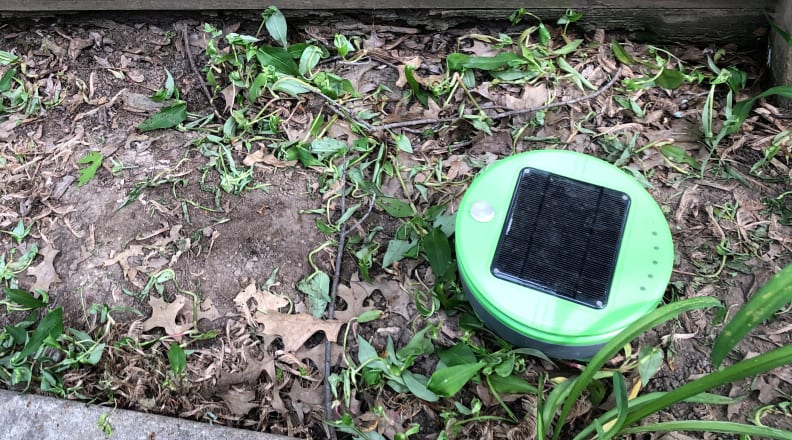This robot will weed your garden—watch how it works
Adios, gardening gloves! Tertill promises to take care of weeds.
 Credit:
Reviewed / Sarah Kovac
Credit:
Reviewed / Sarah Kovac
Recommendations are independently chosen by Reviewed's editors. Purchases made through the links below may earn us and our publishing partners a commission.
I love gardening, but when the heat index hits triple digits and the mosquitoes are out in full force, weeding my multiple garden beds is not a pleasant job. It's finally warming up again at my Missouri home, but thankfully garden weeding is a task I can outsource. We have robots that vacuum, robots that mop, and robots that clean pools and windows, so it may come as no surprise that we now have a robot that will weed the garden.
The Tertill garden-weeding robot looks like a small, green Roomba. (Which comes as no surprise, as Tertill's creator is the one who gave us the Roomba vacuuming robot.) Topped with a solar panel, it has relatively large tires for navigating cultivated dirt, and it communicates with a smartphone via Bluetooth. On the underneath of the chassis is a tiny weed-whacker.
Pretty smart, right? I decided to find out how well the Tertill really works in my own midwestern garden beds.
How the Tertill works
When the Tertill is patrolling the garden, it behaves a bit like a robotic vacuum. It spirals out from its starting position, and when the sensor underneath detects a sprouting weed, the tiny weed-eater whirs to life, cutting the offending plant down to the ground.
On sunny days, Tertill soaks up the rays with its solar panel, and on cloudy days it patrols the garden less frequently to conserve energy. It’s water resistant, and our test unit had zero trouble weathering severe storms and torrential downpours. This little robot requires no real maintenance aside from occasionally replacing the string trimmer line, which is designed to be very easy to do.
What a Tertill needs

The Tertill is most at home in a small garden bed.
Like just about any robot, the Tertill requires a particular environment in order to function properly. The garden bed needs to be surrounded by a 3-inch-tall barrier of some kind, or it will wander out of the garden and start chopping at your yard. The barrier can be anything solid: railroad ties, bricks, landscaping edging, logs, or wires you can get from Tertill for this very purpose.
If your garden contains plants you’re starting from seed, you can also get protective barrier wires to stick onto the ground on either side of your young plant to keep Tertill from chopping it down. If it’s a tiny plant, Tertill whacks it. Plants more than a few inches tall, however, are detected by the robot’s sensors and won’t get messed with. For that reason, the Tertill is best for maintenance—if your garden is already looking like a jungle of tall weeds, the Tertill will just bounce off the weeds’ stems.
Does the Tertill work?
The Tertill spins and bounces around an enclosed garden area weed eating any plant it encounters that’s just sprouting out of the dirt. Because the robot cuts the sprout down before it gets to really develop, and it will do so every time it pops up, the weed eventually dies for good.
We first tried the Tertill in our vegetable garden that measures about 80 ft. long by 8 feet deep. This is way bigger than the Tertill’s recommended coverage area of 100 sq.ft., but we thought we’d try it anyway. The size of the garden was indeed a problem, as the Tertill generally just hung around in the same area all the time. But the bigger problem was that the robot couldn’t maneuver very well in our freshly-tilled soil, with its bumps and ridges. It often got stuck, despite my attempts to stomp the ground around it to be flat(ish).
We moved the Tertill to a much smaller and flatter garden bed. It was already pretty much covered in weeds, so we just turned the robot loose to see how it did. This time, we were really blown away at how well it performed. Within about a week, all the weeds were completely gone, while the one larger plant in the bed was unscathed. We let it keep patrolling, and we haven’t seen a weed in that bed since.
In the right conditions, Tertill works—and works surprisingly well.
Do you need a Tertill?
If you have a smallish garden bed and you don’t like weeding by hand? Sure. This could be great for folks who want to maintain a beautiful landscape but struggle to keep weeds at bay because of time or physical constraints.



